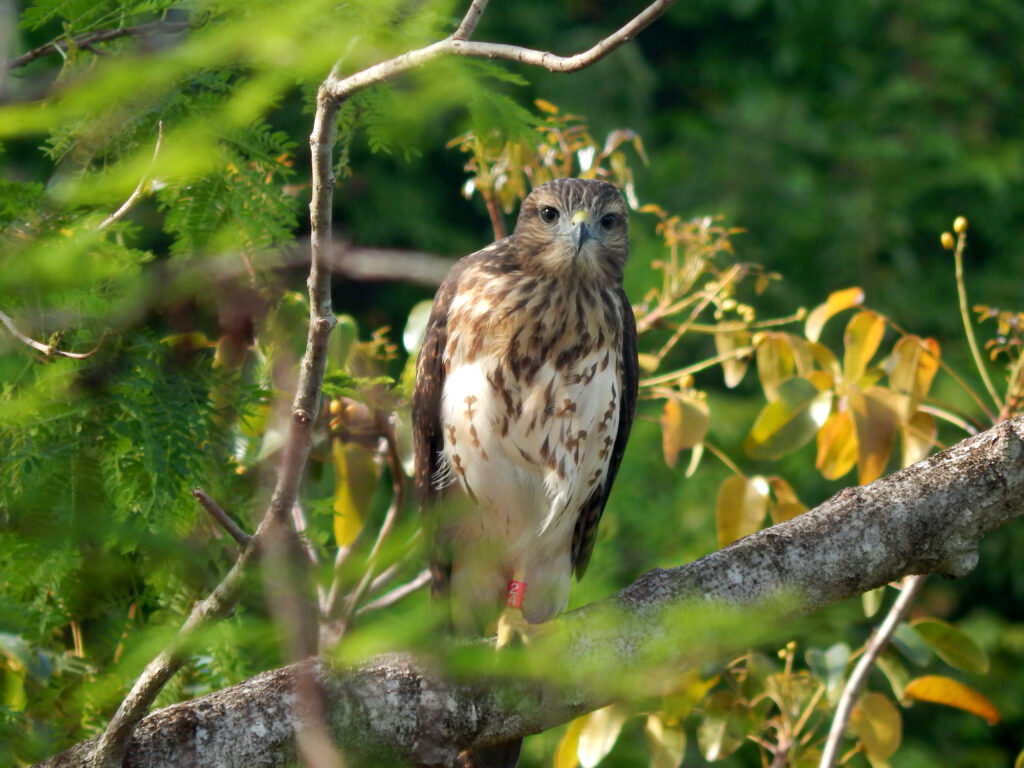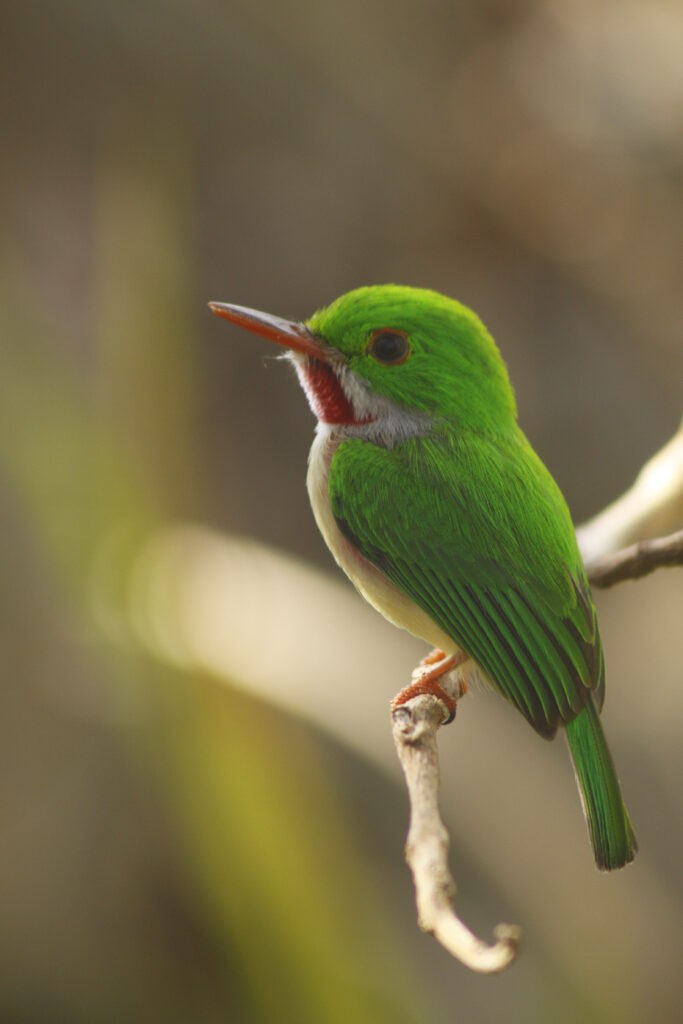
Why the Ridgway’s Hawk
The Ridgway’s Hawk is a critically endangered bird of prey found only on the island of Hispaniola. This bird holds a special place in my heart as I have been working on The Peregrine Fund’s conservation project for this species since 2011. These birds are fun to watch and exhibit some interesting behaviors, such as a trio (one male and two females) nesting together successfully for years, or one pair successfully raise two clutches of fledglings in the same breeding season. They are accustomed to living near humans and in some cases can be found nesting in villages or near roadways.
These hawks can be very vocal, and are often easy to find after first hearing them call. Before conservation efforts began, the species managed to survive in small pockets. The largest extant population is in Los Haitises National Park in Dominican Republic. And another, smaller population, remained on two small islands off the coast of Haiti, together known as Les Cayemites. This population went undetected by scientists for over 50 years! Despite the many threats they face, and a once quickly-declining population, what is most impressive about these birds is their resilience. This is why we have chose the Ridway’s Hawk to be our bird in focus.
Some Facts about the Ridgway’s Hawk
- Ridgway’s Hawks mate for life and both adults help to build their nest, incubate the eggs, and raise their young
- The species was believed to have been extirpated from Haiti, until it was rediscovered by a team of Haitian biologists in Les Cayemites, Haiti on 19 August, 2019.
- This hawk is most closely related to the Red-shouldered Hawk
- These birds of prey often build their nests in palm trees, usually on top of another bird’s nest – the endemic Palmchat!
- Ridgway’s Hawks lay between 1 to 3 eggs.
- Nestlings hatch after approximately 32 days
- Young hawks fledge from the nest at around 42 days and stay in the adults’ territory for up to 3 months before they disperse.
- The current estimated population of this species is approximately 450 individuals, and rising.
- Some of the biggest threats to this species are human persecution and infestation of nestlings by parasitic nest flies. The Peregrine Fund has found solutions to help mitigate these threats.
Ridgway’s Hawk Conservation
The Peregrine Fund is a non profit organization dedicated to the conservation of raptors around the world. It has been working to protect the Ridgway’s Hawk since 2000. Taking a holistic approach to conservation, the team (made up of more than 35 local biologists and educators) focuses on scientific study, population management, environmental education, reintroduction, and community engagement to help reduce the threats – both natural and anthropogenic – to the species. Today, the Ridgway’s Hawk population has nearly doubled (from an estimated 250 to over 450 in 2 decades). Thanks to reintroduction efforts, and the rediscovery of this hawk in Haiti, there are now 4 distinct populations of this hawk on the island.
Where to see the Ridgway’s Hawk
The Caribbean region is a biodiversity hotspot. The island of Hispaniola encompasses two countries – Haiti and the Dominican Republic. Whitehawk currently offers tours to the Dominican Republic, a country known for its diverse avifauna. And seeing one of these beautiful hawks is a true highlight. There are a few areas one can visit to search for this endemic bird of prey.
Los Haitises Naitonal Park is one of the most important national parks in the country. It is home to some dramatic landscapes and soome incredible wildlife. The last 2 remaining endemic terrestrial mammals, the Hispaniolan Solenodon and the Hispaniolan Hutia are found here, though they are incredibly hard to see. White-necked Crow, Hispaniolan Amazon, Hispaniolan Oriole, and Antillean Piculet are some of the more than 100 bird species recorded here.
Aniana Vargas National Park is the site of The Peregrine Fund’s most recent reintroduction efforts. Releases of young hawks in the area began in 2019. Today, there are at least 5 pairs in the area. From late April or early May, it is also possible to visit the release site and see this conservation program in action. Punta Cana, a resort area, also has a population of over 30 breeding pairs, thanks to reintroduction efforts. This is perhaps the easiest place to see these amazing raptors and several other lowland endemic birds as well.

The Broad-billed Tody (left) is just one of the many endemic bird species we can see on a tour to Dominican Republic. During a week-long birding tour, we can expect to find around 30 other endemic bird species. Narrow-billed Tody, Hispaniolan Woodpecker, Hispaniolan Trogon, Hispaniolan Lizard Cuckoo, Black-crowned Palm-Tanager, Green-tailed and White-winged Warbler, Palmchat, are just a few of them.
Apart from the places to visit to specifically seek out this hawk, there are many places to explore within the Dominican Republic and its variety of incredible habitats. Perhaps most famous for its beautiful beaches, it also boasts mangrove and broadleaf forests, grasslands, xeric landscapes, roaring waterfalls, rivers, clear natural pools, and dramatic karst hills. The Dominican Republic has the highest point, Pico Duarte, and the lowest point, Lago Enriquillo, in the Caribbean. Their tourism slogan is “Dominican Republic has it all.” Why not visit the island to see it all for yourself?
Would you like to schedule a tour or learn more about how to see Ridgway’s Hawks in the wild? Please contact us at info@whitehawkbirding.com
– Marta

